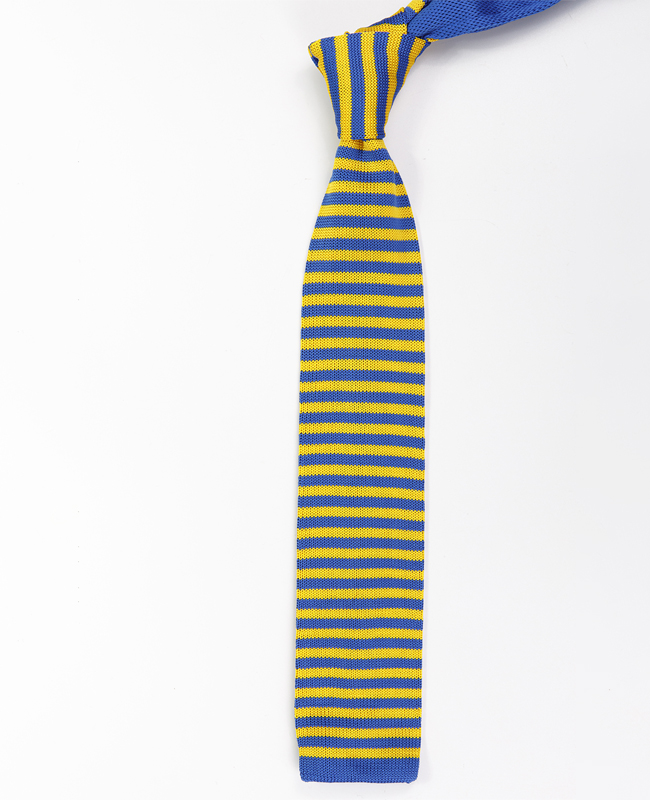A historical trace of the necktie is dated back to Croatian mercenaries who served in France during the Thirty Years' War (1618-1648), and who, in the process, aroused interest among Parisians. The small, knotted neckerchiefs these mercenaries wore were eventually known as cravats (cravate in French), and Louis XIV started wearing a lace cravat when he was seven, setting the stage for the garment to become the fashion of nobility.
Early ties were often made of silk. They were thin, flat and wrinkle-resistant. They were available in solids, or striped. The solids were usually maroon-red, blue, white and black.
During World War II, matte finished rayon striped regimental ties became popular. These ties replaced Japanese silk ties. Wool and wool-cotton ties were also common during the war.
Hand-painted ties were also common in the early 1940s, and became very popular. These ties were often themed around the hobbies and interests of the wearer, such as painting, fishing or sailing.
During the 1980s and 1990s, narrower ties became more popular again. These included novelty (or joke) ties or deliberately kitschy ties designed to make a statement, such as those with cartoon characters or commercial products or pop culture icons.


 English
English Español
Español












